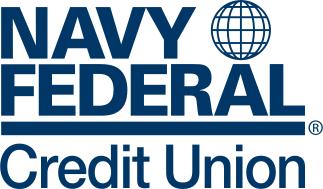Student Loans For Military Spouses

As a military spouse, you might wonder if there is help for student loans. Unfortunately, there are no student loan programs specifically geared toward military spouses, but that doesn’t mean there isn’t help available.
MYCAA is a helpful tuition assistance program, but it might not be enough for some military spouses and is not open to everyone. Some applicants will have to use student loans to help fund their education. Student loans can seem overwhelming, but they can be the correct answer when you need help financing your education.
A military spouse can access both federal and private student loans. Federal loans are from the government, while private loans can be from individual lenders, banks, credit unions, schools, and even state agencies.
What Happened to the Military Spouse Student Loan Deferrment Act?
Some will find this article while searching for information on military spouse student loan deferral programs, but unfortunately there are no such federal options at press time.
That said, an attempt was made to pass a law to help military spouses manage their student loan debts. In 2021, House Resolution 3641, the Military Spouse Student Loan Deferrment Act was introduced into the House of Representatives and sent to the House Committee for Education and Labor.
The substance of this one-page bill includes the following:
- DEFERMENT FOR DISLOCATED MILITARY SPOUSES: DURATION AND EFFECT ON PRINCIPAL AND INTEREST.—A borrower of a loan made, insured, or guaranteed under this part or part B who meets the requirements of subparagraph (B) shall be eligible for a deferment for a period of 90 days, during which periodic installments of principal need not be paid, and interest shall not accrue.
- “(B) ELIGIBILITY.—A borrower of a loan made, insured, or guaranteed under this part or part B shall be eligible for a deferment under subparagraph (A) if the borrower:
“(i) is the spouse of a member of the Armed Forces serving on active duty; and
“(ii) has experienced a loss of employment as a result of relocation to accommodate a permanent change in duty station of such member.”
The act died in the House and did not move beyond the introduced stage. At press time, this law is a dead issue and has not been reintroduced.
What Is the Servicemembers Civil Relief Act?
Military spouses can also qualify for the Servicemembers Civil Relief Act (SCRA), which provides protection and benefits to eligible applicants. The SCRA provides a 6 percent interest rate cap to servicemembers and their spouses during active duty and one year after for financial obligations made before their military service.
While this is not a student loan forgiveness program, it can lower monthly payments.
Differences Between Federal and Private Student Loans
There are some significant differences between federal and private loans. With a federal loan:
- You don’t have to start paying it until you graduate, leave school, or change your enrollment status to less than half-time.
- The interest rate is fixed and often lower than you would find with a private loan. Federal loans are also much lower than typical credit card interest rates.
- Students who have a financial need will likely qualify for a subsidized loan, in which the government will pay the interest while they are in school at least half-time.
- A credit check is not required (in most cases), and these loans can also help you establish your credit.
- A cosigner is not required.
- Your interest may be tax deductible.
- You may consolidate your payments into a direct consolidation loan, and if you have trouble paying them back, you can temporarily postpone them or even lower your payments.
- There are several different payment options and no prepayment penalties. If you work in public service, you may have the option of having your loans forgiven.
With private student loans:
- You might have to start paying your loans back while you are still in school, and they will likely have higher interest rates.
- They won’t be subsidized, and you’ll need established credit.
- You might need a cosigner, and your interest might not be tax deductible.
- You can’t consolidate them into a direct consolidation loan, and there won’t be as many deferment options.
- There could be prepayment penalties.
- There are typically no loan forgiveness programs.
How to Apply For Student Loans
You can apply for federal loans through FAFSA (Free Application for Federal Student Aid). By filling out this form, you are starting the process for federal aid through grants (which you don’t have to pay back), loans (which you do), and work-study options.
Each academic year, FAFSA deadlines are similar—applications open on October 1 and close on June 30. Even with that window, you should complete and submit the Employment Certification as soon as possible because many schools distribute funding on a first-come, first-served basis. The form is not exclusive to first-year college students—enrollees must renew their application each academic year.
For private loans, you will need to do your research. Each loan could be different, with its terms, fees, and what you must do to apply. You can also check with your college or university to see if they have a list of preferred private loan providers.
After you compare loans, apply for the ones you are comfortable with that you qualify for. Since you might need a cosigner for a private loan, find someone you trust, usually from your family.
Registration is for CollegeRecon.
Sponsored by

Paying Your Student Loan
For federal loans, there is typically a six-month grace period before you need to start making payments; this gives you little time to find a job. If you drop out of school or your attendance status changes to less half-time, you must start paying your loans off immediately.
The grace period applies to direct subsidized/unsubsidized loans, subsidized/unsubsidized Federal Stafford loans, and some private loans. It does not apply to PLUS (Parent Loan for Undergraduate Students.) You can also choose to consolidate your loans during your grace period.
How much you should pay depends on the repayment plan you have set up. The default payment program is the Standard Repayment Plan, a 10-year program of fixed monthly payments.
If you have trouble keeping up with your payments, you have other options; they include:
- The Revised Pay As You Earn plan (REPAYE) covers 10 percent of your discretionary income.
- The Pay As You Earn plan (PAYE) covers 10 percent of your discretionary income but never more than the 10-year Standard Repayment Plan amount.
- The Income-Based Repayment plan (IBR) covers 10 percent of your discretionary income if you’re a new borrower on or after July 1, 2014, but only the 10-year Standard Repayment Plan amount. It’s 15 percent if you were not a new borrower on or after July 1, 2014.
- The Income-Contingent Repayment plan (ICR) covers the lesser of 20 percent of your discretionary income or what you would pay on a repayment plan with a fixed payment over 12 years, adjusted according to your income.
Help for Paying Student Loans
A number of additional programs can help, even if they are not directly for military spouses.
The Public Service Loan Forgiveness Program (PSLF)
The PSLF program will forgive the remaining balance on direct loans after you have made 120 qualifying monthly payments under a repayment plan while working full-time for a qualifying employer.
You qualify based on your employer rather than on your specific job. You will need to work for these types of organizations to qualify:
- Government organizations at any level—federal, state, local, or tribal.
- Not-for-profit organizations that are not tax-exempt under section 501 ( c ) (3) of the Internal Revenue Code.
- Other types of not-for-profit organizations are not tax-exempt under section 501 ( c ) (3) of the Internal Revenue Code if their primary purpose is to provide certain qualifying public services.
- Serving as a full-time Americorps or Peace Corps volunteer also counts.
Teacher Loan Forgiveness
Teacher Loan Forgiveness is a way for teachers to be forgiven for some or all of their student loan debt. You must teach full-time for five consecutive academic years in a low-income school or educational service agency and meet other qualifications.
If you qualify, you can be forgiven for up to $17,500 on your direct subsidized and unsubsidized loans and your subsidized and unsubsidized Federal Stafford loans. However, military spouses often do not get to live somewhere where they could have taught for five consecutive years.
Perkins Loan Cancellation for Teachers
The Perkins Loan Cancellation for Teachers program allows you to have some or all of your student loans canceled or discharged. To qualify, you must:
- Work full-time as a teacher in a public or nonprofit elementary or secondary school.
- Work at a school that serves low-income families, or be a special education teacher, teacher in mathematics, science, foreign languages, or bilingual education, or in any other field of expertise determined by a state education agency to have a shortage in that subject.
- Teach full-time for a full academic year or its equivalent.
This program discharges 15 percent of your loan per year for the 1st and 2nd years, 20 percent for the 3rd and 4th years, and 30 percent for the 5th year. You must request appropriate forms from the office that administers the Federal Perkins Loan program at the school that holds your loan.
National Health Service Corps Loan Repayment Program
The National Health Service Corps Loan Repayment Program recruits health professionals for employment in areas with worker shortages. In return, it helps them repay their qualifying student loans.
You can enlist in this program if you’re open to moving to other areas, provided you meet the following requirements:
- You are a U.S. citizen (born or naturalized) or U.S. national.
- You are a provider (or eligible to participate as such) in Medicare, Medicaid, or the State Children’s Health Insurance Program.
- You are trained and licensed to practice in the NHSC-eligible discipline and state where you applied.
- You are a healthcare professional in an eligible discipline with qualified student loan debt.
- You work at an NHSC-approved site.
Award amounts are a maximum of $75,000 for a full-time, two-year service commitment and $37,500 for a half-time, two-year service commitment.
Nurse Corps Loan Repayment Program
The Nurse Corps Loan Repayment Program covers up to 85 percent of education debt for:
- Registered nurses (RNs)
- Advanced practice registered nurses (APRNs)
- Nursing faculty
Eligible applicants must:
- Work in an approved healthcare facility with a critical shortage of nurses (as critical shortage facility)
- Work in an approved nursing school as nurse faculty
An applicant must be a licensed registered nurse, advanced practice registered nurse, or a nurse faculty member with qualifying nursing debt. Their nursing education must come from an accredited nursing school in a U.S. state or territory.
The application cycle is typically from October 1 to March 31 each year. During that time, you can apply through the HRSA Nurse Corps application portal.
Student loans can help you achieve your educational dreams. As a military spouse, you have funding options. Take the time to do your research and figure out what option would be best for you.
RELATED:
- Transfer your GI Bill to Spouse and Dependents
- What I Wish I’d Known Before: Transferring GI Bill Benefits to a Dependent
- 10 Unexpected Careers to Pursue Through MYCAA
- FAFSA: What You Need To Know
- Student Loan Forgiveness & 0% Interest Loans
- Student Loans For Military Spouses
- Troops To Teachers: Top 4 Tips For Veterans to Become Teachers
- Student Loan Tax Deduction: Everything You Need to Know


